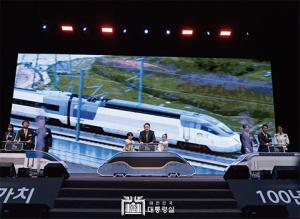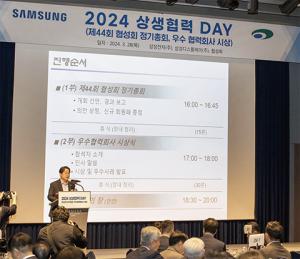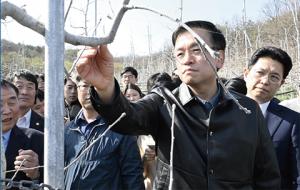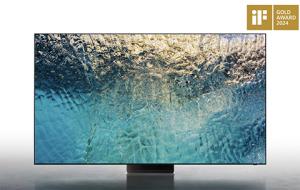 |
||
| ▲ 한국대중음악박물관 유충희 관장 | ||
세상에서 가장 아름다운 언어, ‘음악’의 역사와 감동을 전하다
한국대중음악박물관 유충희 관장
‘음악’은 인류 보편의 언어다. 서로 다른 말과 문화를 가지고 있더라도 우리들은 음악을 통해 충분히 서로 같은 정서를 공유하고 공감할 수 있다. 또한 우리는 음악을 통해 사랑을 표현하고, 마음에 평화와 위안을 얻으며, 아픔을 치유받기도 한다. 지난해 4월 개관한 한국대중음악박물관은 음악이 가진 이러한 힘을 더욱 특별한 경험으로 만나볼 수 있는 곳이다.
한국대중음악 100년의 역사를 말하다
경주시 보문관광단지 내에 위치한 한국대중음악박물관은 한국대중음악 100년의 역사가 고스란히 살아 숨 쉬는 국내 최초의 대중음악 전문박물관이다. 이곳에는 국내 최초의 상업음반인 1907년 경기민요 ‘다졍가’, 1908년 농타령, 1920년대 대중음악의 효시인 학도가(철도찬가),내고향을 리별하고, 희망가, 낙화유수, 윤심덕의 사의찬미, 이미자의 데뷔 곡 ‘열아홉 순정(1959)’보다 앞서 녹음된 것으로 추정되는 유성기 음반은 물론이고, 싸이의 ‘강남스타일’ LP레코드까지 한국대중음악과 관련된 최초, 희귀, 데뷔 음반 등 기록적 가치가 있는 음반 1000여점이 전시되어 있다. 또한 신중현, 한대수, 남진, 이금희 등 한국대중음악사에 의미 있는 영향력을 끼친 인물들과 관련된 음반, 물품, 의상 등을 특별 전시하고 있으며, 그 중 이금희관에서는 개관기념으로 그녀가 실제로 착용하고 활동했던 무대의상을 공개하기도 했다. 뿐만 아니라 영화음악관에서는 한국영화의 태동과 성장, 전성기를 함께했던 영화음악 음반들을 전시하고 있으며, 기획전시관에서는 대중음악전문가 52명이 선정한 <한국 대중음악 100대 명반展>을 진행하고 있다.
이에 더해 작년 9월부터는 1896년 우리 민족의 노래를 최초로 녹음한 실린더 음반을 국내 최초로 대전시관 상설관에서 전시하고 있다. 그동안 국내에서 단 한 번도 공개된 적 없는 이 음반은 미국 국회 도서관에 전시중인 원본을 어렵게 복사한 것으로 음악 역사적, 학술적 가치가 매우 큰 귀중한 자료이다. 유충희 관장은 “현재 공개된 것 외에도 약 4만여 점의 대중음악 자료를 소장하고 있으나, 전시공간이 부족해 명음반과 희귀음반 위주로 선별하여 전시를 진행하고 있습니다. 국악 관련 희귀음반 등의 여타 소장품들의 경우 매년 기획전을 마련해 공개해 나갈 계획입니다”라고 밝혔다.
시대를 담는 그릇, 대중음악의 발전과 계승에 힘쓸 터
한국대중음악박물관은 단순히 전시물을 관람하는 ‘보는 전시’에 그치지 않고, 음악을 직접 듣고 체험할 수 있는 프로그램을 제공하며, 복합문화공간으로서의 역할을 다하고 있다. 박물관 1층에는 최고수준의 음향시스템을 통해 음악을 즐길 수 있는 직영 카페 ‘랩소디 인 블루(Rhapsody In Blue)’가 마련되어 있으며, 이곳에서는 수시로 각종 공연 및 문화행사가 개최되고 있다. 실제로 지난해 12월 25일에는 경주에서 최초로 한국 포크록의 전설 한대수의 공연이 펼쳐지기도 했다. 또한 3층에는 오디오 100년사를 통해 1877년 에디슨이 최초로 발명한 틴포일 축음기, 대한제국 한국최초 라디오, 세계 최대 축음기, 오르골, 전설의 오디오인 웨스턴 일렉트릭, 알텍, 암펙스, 탄노이, JBL, 클랑필름 등 전세계 희귀오디오가 세계에서 최초로 공개 전시되고 있다. 최고급 음향시스템이 구비된 시청각실에서 선곡된 음악을 편안히 감상할 수도 있다. 뿐만 아니라 지하에 위치한 어린이 체험관 ‘뮤플’에서는 아이들이 까혼, 젬베, 드럼, 마라커스 등의 타악기를 직접 연주해 볼 수 있는 프로그램을 운영하고 있으며, 1500㎡ 규모의 야외공연장도 마련되어 박물관을 찾은 이들이 자연과 함께 음악을 즐길 수 있는 기회도 제공하고 있다.
음악에 대한 뜨거운 열정으로 국내 최초이자 최대 규모의 대중음악박물관을 만들어낸 유충희 관장. 경주에 위치한 수많은 박물관 중에서도 경주국립박물관을 제외하면 유일한 제1종 전문박물관으로 등록될 만큼 소장품의 양과 질을 높이 평가받았지만, 유 관장은 아직도 해야 할 일이 많이 남았다고 말한다. 그는 “대중음악은 당시의 시대상을 반영한다고 합니다. 한국 대중음악의 역사가 100년이라는 시간을 이어온 만큼, 그에 관련된 자료의 보존은 물론, 활발한 연구를 통해 아름다운 음악의 역사를 후손에게 물려주는 것이 무엇보다 중요하다고 생각합니다”라고 밝혔다. 그는 향후 건물 증축을 통해 전시실을 추가하는 한편, 체계적으로 대중음악사를 공부할 수 있는 아카데미 설립, 성인 및 대학가요제 개최 등 다양한 기획을 통해 더 많은 이들에게 대중음악을 알려나갈 계획이라 전했다. 음악이 전하는 두근거리는 감동을 느껴볼 수 있는 곳, 한국대중음악박물관의 가을이 더욱 아름다운 빛으로 물들어가는 듯하다.
Delivery of history and touch of music that is the most beautiful word
The K-POP Museum director Ryu Joong-Hee
Music is the universal word in human beings. Even we have different languages in the world people can share the same emotion enough with the music for each other. Also, we express love by music and can have peace and relief in mind and also our pains could be cured. Last year, the K-POP Museum was open in April and it is the place we can meet the power of music with a special experience as well.
Saying a hundred of Korean popular music history
The K-POP Museum is located in Bomun Tourist Complex, Gyeongju and it is the first museum to introduce Korean contemporary music museum showing the history of Korean pop music at once. In this place, there are first, rare and debut albums related to Korean popular music from the first commercial album Gyeonggi folk song ‘Friendly Song’ in 1907, ‘Field Song’ in 1908, ‘Train anthem’ that is the first modern song in the 1920’s and ‘Hope Song’, ‘Death Song’ and even gramophone record that was recorded before a debut song by Lee Mi Ja ‘Pure Love at 19’ (1959) to LP ‘Gangnam Style’ by Psy. Besides, there are influential singers’ albums, their stage clothing of Shin Joong-Hyun, Han Dae-Soo, Nam Jin and Lee Geum-Hee etc and especially, the Lee Geum-Hee Hall has her real costume and it was exhibited as a special set for the opening of the museum. Other than that, <The 100 Greatest K-POP Album Exhibition> chosen by popular music journalist is showing at the special showcase.
Plus, since last September, the K-POP Museum has been showing cylinder records that recorded Korea’s first song in 1896 at the great exhibition room every day. This record never showed before. The museum has a copied one from the state library of congress and it was hard to make it. Therefore, this one is a very rare material and worthwhile to keep it in terms of music history and academy. K-POP Museum director Ryu Joong-Hee said, “We have about 40,000 of Korean popular music materials than we are open to the public but there is not enough space at the moment. So we are collectively showing mainly great albums and rare items. Regarding rare albums of Korean traditional music and other collections, we will show every year through a special exhibition as a plan.”
Bowl of the time, trying to hand down and develop of Korean pop song
The K-POP Museum is not just a place to have many rare music materials to show to people, but also they are running the place as a multi cultural space. At the first floor, the café, ‘Rhapsody in Blue’ has an excellent sound system so that visitors can listen to music with a high quality. There has held many concerts and cultural events. In particular, last December 25th, the Korean folk rock lengend, Han Dae-Soo had a stage in there for the first time in Gyeongju. At the 3rd floor, there are the tin-foil gramophone invented by Edison in 1877, the Korea first radio, world-famous gramophones, legendary audios such as Electric, AMPEX, Tannoy, JBL, Klangfilm and so on and they are at the exhibition for the first time in the world to the public. All of them are not found like that in the world. At the A/V room, visitors can listen to music with the greatest sound performance selectively. Besides, there is a children’s experience room at the basement, called ‘Muple’, they can play percussions as a program. In addition, there is an outdoor stage scaled with 1,500㎡ so visitors can appreciate the music with nature.
With an incredible passion for music, the K-POP Museum director Ryu Joong-Hee made it happen. This is the first and biggest music museum in Korea and is the first professional music museum except for Gyeongju National Museum as much as it is evaluated highly in quality and quantity. However, he says that there is so much to do for that. He addressed, “I think popular music reflects on the current times. As Korean popular music has been 100 years, it is important to keep it and take our beautiful music over our descendants throughout preserving related materials and studying actively.”
He is planning to extend the building afterwards for more exhibition room and at the same time, promote various programs like building up the academy for studying Korean pop music systematically and adult and college song contests so more people would be interested in K-POP.
임승민 기자 press0105@naver.com







